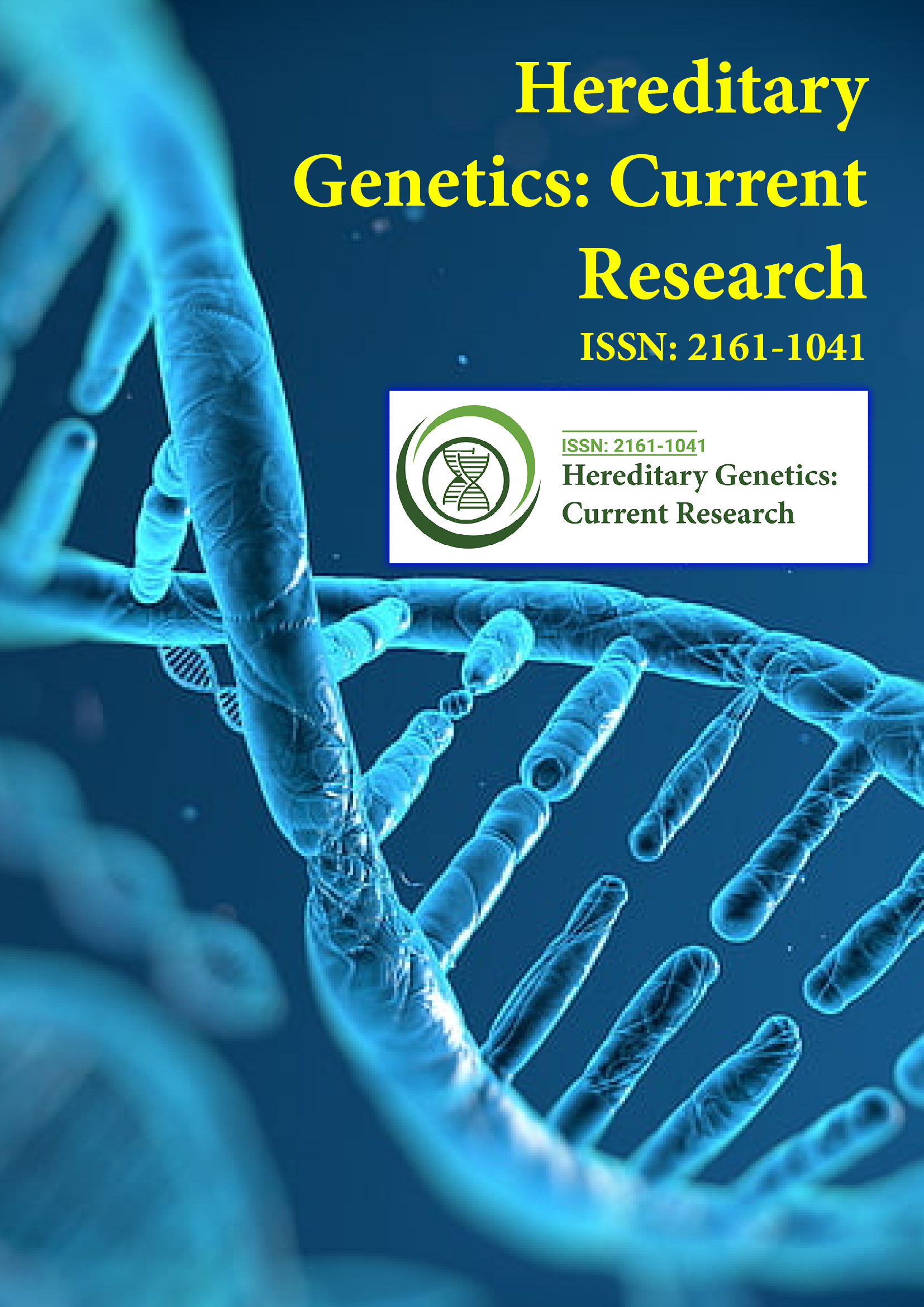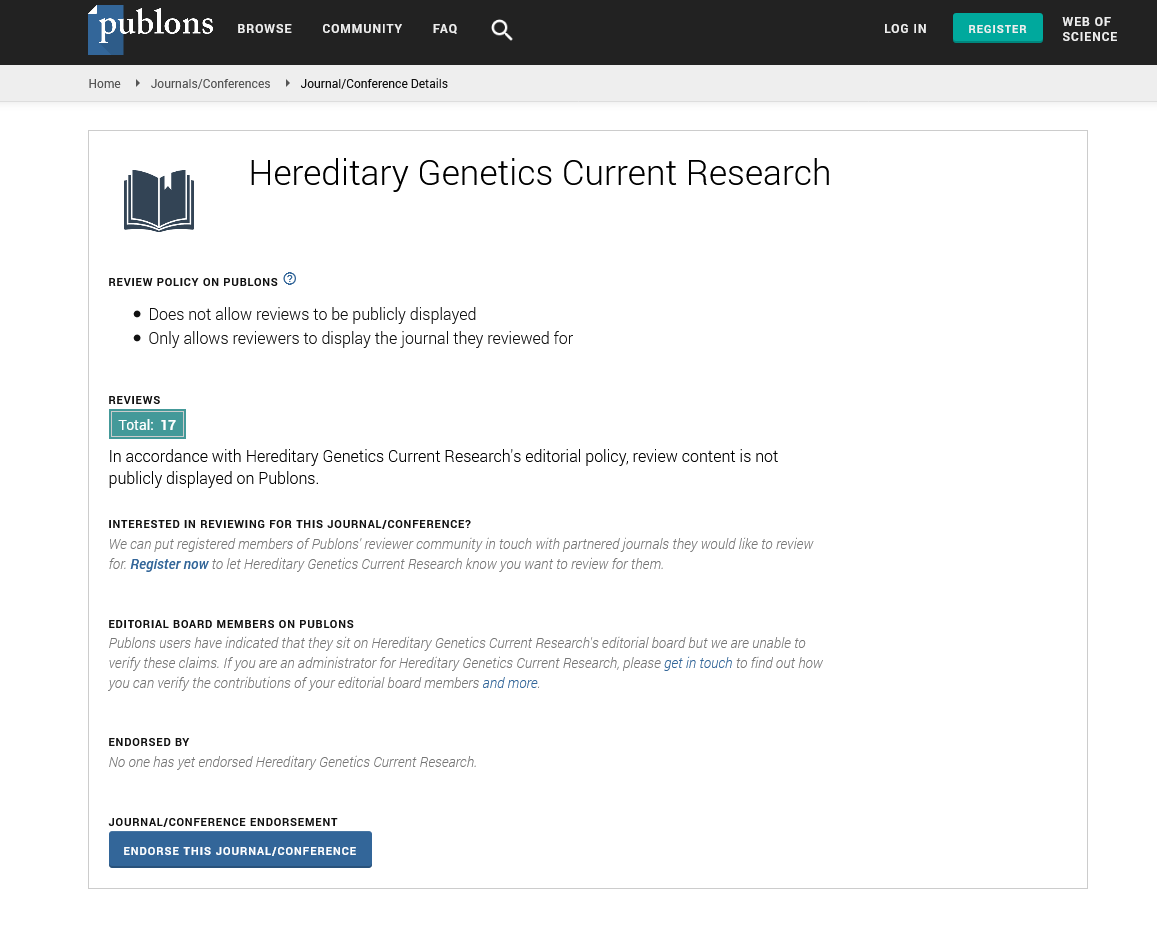Indexed In
- Open J Gate
- Genamics JournalSeek
- CiteFactor
- RefSeek
- Hamdard University
- EBSCO A-Z
- NSD - Norwegian Centre for Research Data
- OCLC- WorldCat
- Publons
- Geneva Foundation for Medical Education and Research
- Euro Pub
- Google Scholar
Useful Links
Share This Page
Journal Flyer

Open Access Journals
- Agri and Aquaculture
- Biochemistry
- Bioinformatics & Systems Biology
- Business & Management
- Chemistry
- Clinical Sciences
- Engineering
- Food & Nutrition
- General Science
- Genetics & Molecular Biology
- Immunology & Microbiology
- Medical Sciences
- Neuroscience & Psychology
- Nursing & Health Care
- Pharmaceutical Sciences
Commentary - (2023) Volume 12, Issue 1
Evaluating Predictive Markers, Treatments, and Emerging Therapies for Adrenocortical Carcinoma
Brian Rissel*Received: 03-Mar-2023, Manuscript No. HGCR-23-20827; Editor assigned: 06-Mar-2023, Pre QC No. HGCR-23-20827 (PQ); Reviewed: 20-Mar-2023, QC No. HGCR-23-20827; Revised: 27-Mar-2023, Manuscript No. HGCR-23-20827 (R); Published: 03-Apr-2023, DOI: 10.35248/2161-1041.23.12.238
Description
Adrenocortical Carcinoma (ACC) is a rare tumour that arises from the adrenal cortex, with an annual incidence of 0.7 to 2.0 per million people. ACC can occur at any age, although the greatest occurrence is between the ages of 40 and 60, with females having a higher prevalence (up to 60%). ACC is mainly sporadic, but it can be identified in hereditary syndromes such as Li-Fraumeni and Lynch syndromes, which are caused by particular germline mutations in the TP53 gene or other mismatch repair genes, respectively. The stage of the disease at diagnosis is an important prognostic factor for ACC: 5-year survival is 60%-80% in patients with stage I, 50% in people with locally progressed illness, and a very low percentage (0%-28%) in patients with metastatic disease. Proliferation activity and cortisol hypersecretion are two other prognostic variables at the time of diagnosis. Nonetheless, recurrence is common in patients have undergone radical surgery (30%-70% of the time). Patients with metastatic or inoperable disease require systemic therapy, which includes mitotane alone or mitotane plus etoposide, doxorubicin, and cisplatin. The vast majority of patients got Mitotane and Etoposide, Doxorubicin, Cisplatin And Mitotane (EDP-M) will have illness progression.
A pharmaceutical therapy combining gemcitabine and capecitabine could be used in these patients; however this regimen has poor therapeutic benefit. New treatment strategies are required on these grounds. Many detailed investigations of the ACC genomic profile have been undertaken, revealing a complex genomic landscape with recurring mutations in diverse genes such as ZNFR (20%), CTNNB1 (14%), TP53 (14%), and RB1 (11%).Mutations in the CTNNB1 gene, which codes for catenin, and the TP53 gene, which codes for the tumour suppressor p53 proteins, have been identified as poor prognostic factors for ACC. Additionally, mutations in the CTNNB1 and TP53 genes have been related to early and late ACC carcinogenesis, respectively. Full genome doubling is detected in approximately 51% of ACC samples; furthermore, hypoploidy or the loss of a large portion of the genome is found in a considerable proportion of cases. At the molecular level, in addition to the p53 and Wnt—catenin pathways, for which no specific molecular target agents are currently in use, other potentially druggable pathways, such as the Epidermal Growth Factor Receptors (EGFRs), Insulin Growth Factor-Receptor 1 (IGF-1R), and Vascular Endothelial Growth Factor Receptors, have been identified in ACC patients (VEGFRs). Notwithstanding the scientific reasoning, clinical trials of medicines targeting these pathways yielded unsatisfactory outcomes. The OMP-54F28 agent, a fusion protein made up of the cysteine-rich domain of frizzled family receptor 8 fused to the human immunoglobulin Fc domain, can bind to all Wnt ligands and block Wnt signalling.
Furthermore, LGK974, an inhibitor of the porcupine membranebound O-acetyltransferase, which is essential for Wnt posttranslational acylation and subsequent secretion, suppresses Wnt signalling in diverse animal models both in vitro and in vivo. A phase I trial to assess the safety of LGK974 is now underway. Another phase I clinical trial is presently underway in the treatment of patients with acute myeloid leukaemia to investigate the toxicity and activity of the small drug CWP232291, which targets -catenin breakdown.
TP53 is the most commonly mutated gene in cancer, resulting in a wide range of effects of mutation on p53 activity. As a result, targeting functional variation mutant p53 necessitates a mutation-specific method, ranging from restoring mutant p53's wild-type activity to mutant protein destruction. TP53 mutations in ACC cause the synthesis of p53 protein with no physiological activity, which appears predominantly in the late stages of tumour growth and is associated with a bad result. Attempts have been detailed in developing short synthetic peptides capable of stabilizing p53 or small compounds targeting important signaling pathways involving mutant p53, including gene therapy that uses viruses to deliver p53 to cancer cells.
Among the many approaches, the small-molecule APR-246, which can promote a conformational change towards a wild-typelike structure, has been found to have high cytotoxic effects in several cancer cell lines and is currently being tested in patients with various solid tumours. Many lines of evidence suggest that the cytotoxic effects of chemo- and radiation may work as immunogenic treatments by increasing the expression or reexpression of Tumor-Associated Antigens (TAAs) or causing further novel mutations, resulting in T-cell-specific immune responses. Additionally, patients may benefit clinically from this technique must be identified using a molecular approach in order to attain clinical efficacy, with a strict examination of the benefit/risk profile. Likewise, we recently advocated that immunotherapy be tested in ACC patients with disrupted MMR pathways and significant levels of MSI. Thus, in the future, the potential efficacy of immunotherapy in the ACC setting will necessitate precise patient selection via a genetic approach, as well as a multimodal treatment combining systemic antineoplastic therapies and/or radiotherapy, as well as drugs inhibiting steroid synthesis and controlling hypercortisolism.
Citation: Rissel B (2023) Evaluating Predictive Markers, Treatments, and Emerging Therapies for Adrenocortical Carcinoma. Hereditary Genet. 12.238.
Copyright: © 2023 Rissel B. This is an open-access article distributed under the terms of the Creative Commons Attribution License, which permits unrestricted use, distribution, and reproduction in any medium, provided the original author and source are credited.

